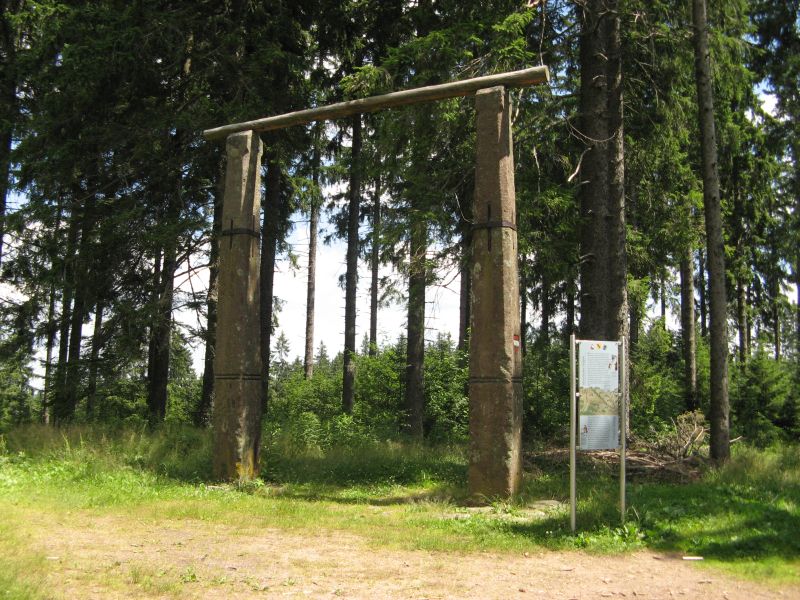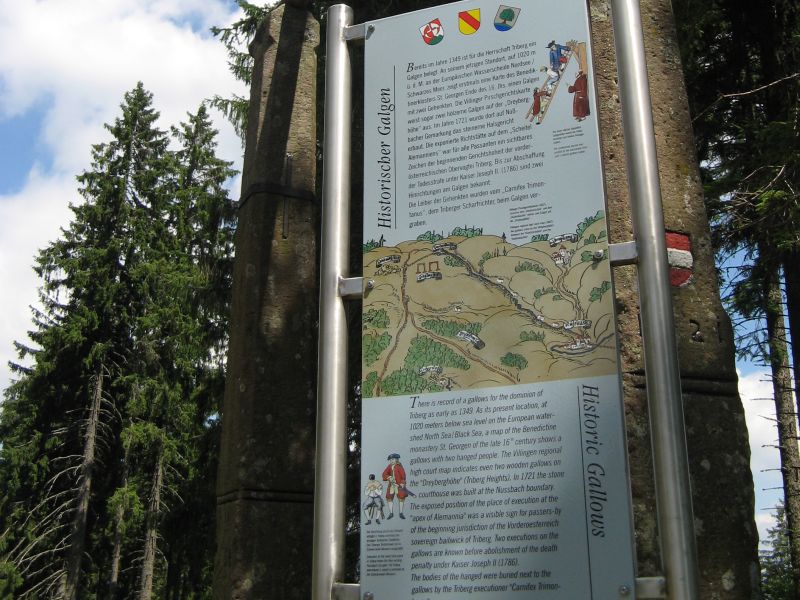Triberger Galgen
"It must have been a pleasure to die on the Triberg gallows."
(Stuttgarter Zeitung of 11.7.1962)
As early as 1349, a gallows was recorded for the Triberg rulership. At its current location, at 1020 m above sea level. d. M. at the European watershed North Sea / Black Sea, a map of the Benedictine monastery of St. Georgen at the end of the 16th century, showed for the first time a gallows with two hanged men. The Villinger stalking court card even shows two wooden gallows on the "Dreyberghöhe".
In 1721 the stone court was built there on the Nußbacher district. The exposed place of execution on the "peak of Alemannia" was a visible sign for all passers-by of the incipient jurisdiction of the Upper Austrian Bailiwick of Triberg. Before the death penalty was abolished under Emperor Joseph II (1786), two executions on the gallows are known. The bodies of the hanged were buried by the gallows by "Carnifex Trimontanus", the Triberg executioner.
You will find the historic gallows on the county road K5728 Schönwald-Villingen between the Stöcklewald parking place and the turn-off to St. Georgen and Furtwangen-Rohrbach.
The former historical executioner´s sword can be viewed in the Black Forest Museum Triberg.




